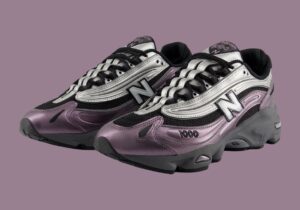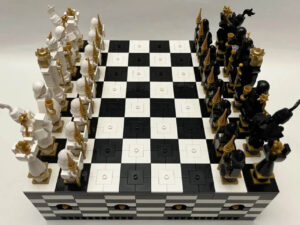
Some brands are born from strategic business plans. Others emerge, almost against their creator’s will, from a need so urgent it blurs the lines between art, memory, and identity. Poison Candy Apple, the new creative project from multidisciplinary artist Manon Macasaet, belongs emphatically to the latter.
At once a brand, a living archive, and an emotional landscape, Poison Candy Apple is not merely a clothing label — it’s a portal into a world Macasaet has been quietly, obsessively building across mediums, cities, and years. Infused with the bittersweet idealism of early Tumblr, the ecstatic melancholia of underground Tokyo fashion, and the crackling energy of New York’s creative diaspora, Poison Candy Apple isn’t asking for a seat at the streetwear table. It’s pulling you into a parallel reality where nostalgia and futurism, dreams and disillusionment, collide in hoodies, t-shirts, and textile experiments that feel like love letters to a youth that never quite existed — but somehow still aches with familiarity.
Manon Macasaet: An Artist Between Worlds
Macasaet’s artistic path defies easy categorization. Filipino-American, raised partly between the U.S. and Asia, trained in fine arts but fluent in internet semiotics, she occupies a liminal space that is increasingly characteristic of her generation’s most interesting creatives. Her early work — sprawling, multimedia installations blending photography, performance, and digital collage — hinted at a deep preoccupation with memory, constructed realities, and emotional cartography.
Yet fashion, despite existing mostly on the periphery of her academic practice, was always humming in the background. “Clothing is our first architecture,” Macasaet once said in an obscure interview on an indie podcast, years before Poison Candy Apple formally launched. “It’s our shelter and our billboard. It says things before we even open our mouths.”
The seeds were already there. It would just take a specific collision of place, time, and emotional readiness to bloom.
Tokyo: The Catalyst
The catalyst came, fittingly, thousands of miles away from the museums and studios where Macasaet was first shaping her artistic language. It came in Tokyo.
Living there on a brief artist residency — and later staying much longer than planned — Macasaet was struck by the way fashion functioned less as a statement and more as an act of world-building. She immersed herself in Shibuya’s fractured, hyperreal streetwear, in Harajuku’s last flickers of DIY rebellion, and in the melancholic beauty of faded purikura arcades. Clothing in Tokyo wasn’t just aesthetic; it was atmospheric.
“I realized,” she says now, “that I didn’t just want to make things. I wanted to make somewhere. A wearable somewhere.”
Thus, Poison Candy Apple was born: a place you could wear, dream into, and remember.
Building a World, Not a Brand
Unlike many contemporary streetwear launches, Poison Candy Apple did not debut with a big splashy campaign, an influencer army, or a cynical “drop culture” strategy. Its entrance into the world was quieter, almost secretive. A few cryptic posts on Instagram; a password-protected microsite; a handful of garments modeled by friends and artists rather than traditional models.
This was by design. Macasaet wasn’t interested in feeding the hype machine. Instead, she approached Poison Candy Apple like an artist would approach an installation: slow, intentional, atmospheric.
The first collection — or, as she insists on calling it, the first “chapter” — centered around oversized zip hoodies, distressed t-shirts, and hand-altered sweats. Everything was imbued with the aesthetic DNA of Tumblr’s golden age: vaporous fonts, dream-logic slogans (“CRY ON THE MOON,” “HEARTBREAK IS A PLACE”), and color palettes that oscillated between sugar-rush pinks and bruised purples.
Each piece felt like it had been pulled from a parallel dimension where internet nostalgia and real heartbreak blur together — a teenage bedroom dreamscape refracted through adult longing.
The response was immediate among those who found it. Poison Candy Apple didn’t go viral. It grew roots — deep, tangled, cult-like.
The Ecstasy Hoodie: A Signature Piece
Every brand needs a signature, whether it seeks one or not. For Poison Candy Apple, it arrived in the form of the Ecstasy Hoodie.
Simple on the surface — heavyweight cotton, relaxed fit, generously oversized hood — the Ecstasy Hoodie transcends its form through detail and context. On the front, a delicate embroidered apple with a glint of poison in its blush; on the back, the word “ECSTASY” scrawled in a font that feels less designed than dreamt.
The Ecstasy Hoodie is not about irony or posturing. It’s about sincerity, that rare and dangerous currency. It wears its heart openly, inviting the wearer to do the same.
Macasaet describes the Ecstasy Hoodie not as a product, but as a “textile relic of a feeling.” And truly, to wear it feels less like participating in a trend and more like stepping into an emotional archive.
The Visual Language: Dreamy Decay
Aesthetically, Poison Candy Apple operates in a visual territory best described as “dreamy decay.” It draws from the cracked-ice beauty of aging technology (glitch art, dying screensavers), the sad glamour of forgotten mall culture, and the lush loneliness of early social media.
Photography is grainy, like overexposed film stock. Product shots are often blurred, distorted, or intentionally imperfect, evoking not polished e-commerce but recovered memories. Models slump, smile half-heartedly, gaze into unseen distances. There is no “grindset” here, no aspirational consumerism. Only a deep, humming ache to be understood — or at least remembered.
Colors are never just colors. Pink isn’t just sweet; it’s electric, wounded, defiant. Black isn’t just edgy; it’s tender, like the inside of a velvet box. Everything is emotionally coded, steeped in semiotics that reward those who take the time to decipher them.
A Brand for Those Who Remember
It’s tempting to slot Poison Candy Apple into the broader Gen-Z nostalgia boom — the TikTok-fueled resurgence of Y2K aesthetics, emo revivalism, and indie sleaze. But that would be a mistake.
Where much of the current nostalgia cycle feels opportunistic — Instagram ads peddling rhinestone belts, brands mining MySpace aesthetics for clicks — Poison Candy Apple feels lived-in, earned. It is not nostalgia as marketing ploy. It is nostalgia as ontology: the very fabric of existence for a generation raised between dial-up and broadband, real and virtual.
You don’t discover Poison Candy Apple by accident. You find it the way you find a long-forgotten playlist on an old iPod. And when you do, it doesn’t ask you to buy into it. It welcomes you home.
What Comes Next?
For now, Macasaet keeps plans deliberately opaque. There are murmurs of a second chapter — something involving denim, something involving a collaborative short film — but she resists the idea of a “collection” drop schedule. Poison Candy Apple is more akin to a growing mythology than a fashion label.
“I don’t want it to scale the way brands are supposed to,” she explains. “I want it to grow the way a memory does: organically, unpredictably, sometimes fading, sometimes flashing back stronger.”
Pop-up installations are rumored — not just stores, but experiences, blending sculpture, sound design, and wearable pieces. Collaborations with other multidisciplinary artists seem inevitable. Maybe even music — Macasaet has been quietly assembling a loose collective of musicians, filmmakers, and visual artists under the Poison Candy Apple umbrella.
In an age where brand expansion usually means a sneaker collab and a TikTok challenge, Poison Candy Apple imagines a deeper form of contagion: a dream spreading, not because it was marketed, but because it was needed.
Impression
Poison Candy Apple is a reminder — urgently needed — that clothing can still mean something. That it can still carry emotion, history, longing. That it can still offer not just a look, but a location: a somewhere to go when the world feels uninhabitable.
Manon Macasaet didn’t set out to build a brand. She set out to build a feeling. And with Poison Candy Apple, she has given that feeling form: cotton and embroidery, memory and myth stitched into something you can pull over your head when the noise outside becomes too much.
In a landscape of endless drops, soulless collabs, and manufactured virality, Poison Candy Apple stands apart — not by being louder, but by being truer.
It is not clothing for everyone.
It is clothing for those who remember.
And in remembering, they dream again.
No comments yet.









